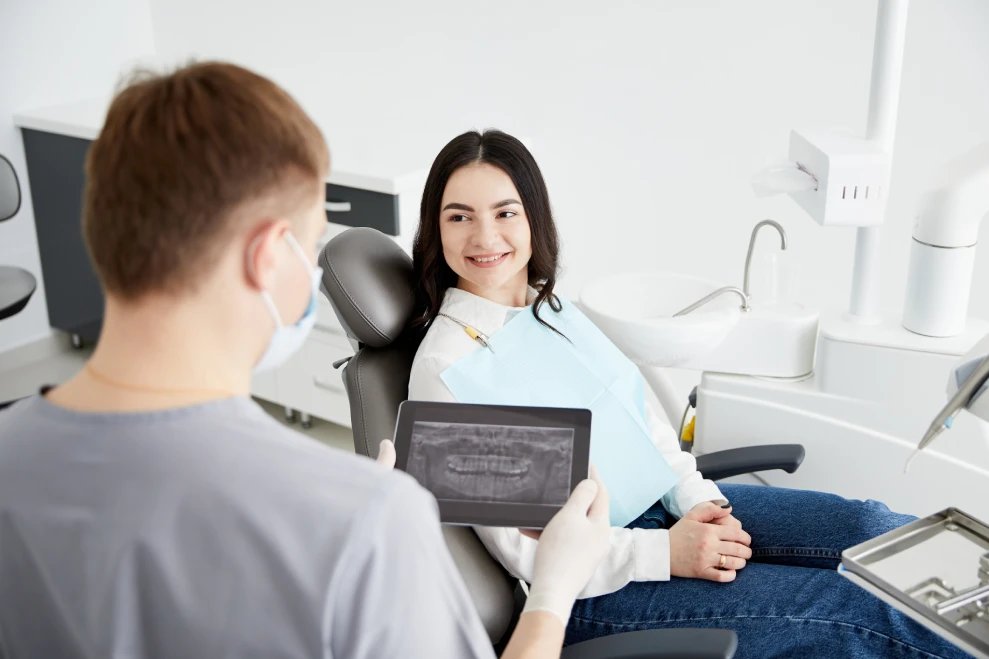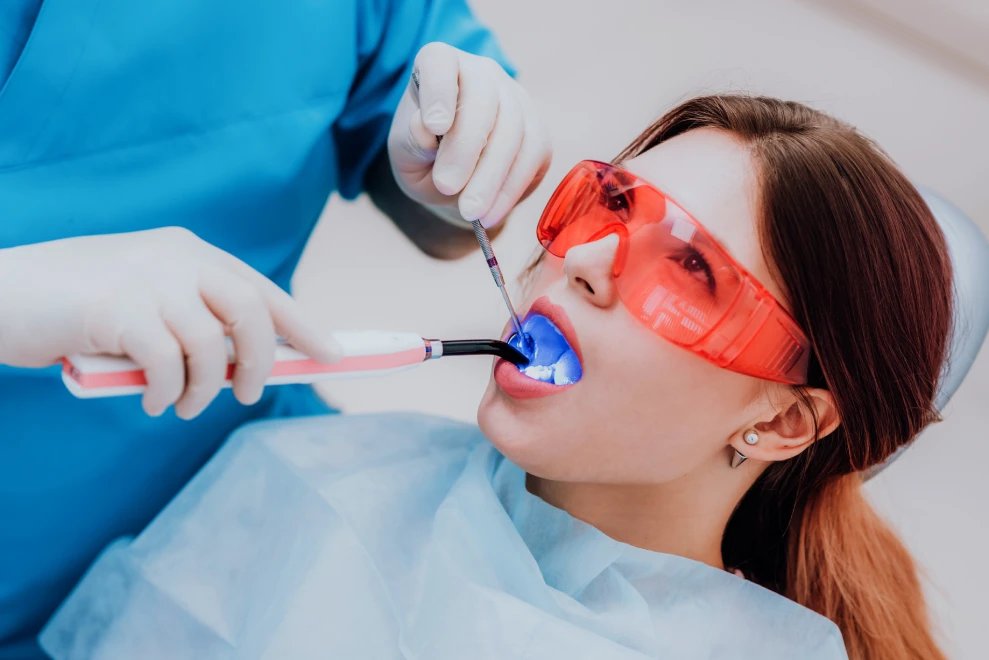Occlusion

What is it?
Orofacial pain related to occlusion is discomfort or dysfunction that originates from how your teeth come together when biting, chewing, or at rest. An improper bite, medically referred to as malocclusion, can create excessive pressure on the temporomandibular joints (TMJ), facial muscles, and surrounding soft tissues.
If left untreated, this imbalance can lead to:
- Chronic jaw pain or stiffness.
- Difficulty opening or closing the mouth.
- Headaches or migraines linked to jaw tension.
- Excessive tooth wear, fractures, or enamel erosion.
- Muscle spasms or facial asymmetry over time.
Occlusion therapy aims to diagnose the exact cause of bite-related pain, correct misalignments, and restore harmony between the teeth, jaw joints, and muscles, improving both function and comfort.

Our Methods
At our Dental Center, we take a comprehensive and multidisciplinary approach to treating occlusion-related orofacial pain
- Occlusal Splints / Night Guards: Custom-made devices that reduce muscle strain, prevent teeth grinding (bruxism), and relieve TMJ pressure.
- Selective Tooth Adjustment: Minor reshaping or adjustments of tooth surfaces to achieve balanced bite forces.
- Orthodontic Treatment (Braces or Aligners): Corrects malocclusion, improves occlusion, and reduces long-term stress on teeth and muscles.
- TMJ Therapy & Physiotherapy: Exercises, manual therapy, and guidance to stabilize jaw joints, reduce inflammation, and restore normal function.
- Holistic Care: Integrating dental, muscular, postural, and lifestyle factors to ensure long-term relief and prevent recurrence.
This multi-layered approach ensures that treatment addresses both the cause and the symptoms of orofacial pain.


When should you do it?
Treatment is recommended if you experience any of the following symptoms or conditions:
- Recurrent jaw pain, clicking, popping, or locking of the TMJ.
- Chronic headaches or tension in facial muscles.
- Uneven tooth wear, tooth fractures, or sensitivity due to bite stress.
- Difficulty chewing, biting, or speaking clearly.
- Bruxism (teeth grinding or clenching), especially during sleep.
- Bite issues after dental restorations, crowns, or orthodontic treatment.
- Muscle fatigue or facial discomfort that worsens over time.
Early evaluation is crucial to prevent worsening of symptoms and to maintain both oral and overall health.
Correcting occlusion offers a combination of immediate relief and long-term improvements

Pain Relief
Reduces headaches, jaw pain, and facial muscle tension.

Tooth Protection
Prevents excessive wear, fractures, and long-term damage.

Improved Function
Enhances chewing efficiency, speech, and jaw mobility.

TMJ Health
Reduces risk of temporomandibular joint disorders and associated complications.

Overall Well-being
Improves sleep quality, reduces chronic discomfort, and enhances quality of life.

Preventive Care
Helps avoid more invasive dental procedures in the future.
Common conditions associated with occlusion-related orofacial pain include






Pain, clicking, or locking of the jaw.
Grinding or clenching of teeth leading to wear, fractures, and muscle fatigue.
Misaligned bite causing uneven force distribution on teeth and jaw muscles.
Persistent tightness in facial or jaw muscles.
Damage to teeth, restorations, or fillings caused by abnormal bite forces.
Tension-type headaches or migraine-like pain originating from bite stress.
By addressing the root cause rather than just the symptoms, occlusion therapy can significantly improve comfort, function, and dental health, while preventing future complications.
Clinical Team
FAQ's
The duration of treatment depends on the severity of the occlusal problem, the type of intervention, and the patient’s response:
- Occlusal Splints / Night Guards: Custom devices can usually be fabricated and delivered within 1–2 weeks, with follow-up visits for adjustments over 1–3 months to ensure optimal fit and effectiveness.
- Selective Tooth Adjustment: Minor adjustments can be completed in a single visit, with occasional follow-ups to monitor bite balance and comfort.
- Orthodontic Treatment (Braces or Aligners): Depending on the complexity of malocclusion, treatment typically lasts 6 months to 2 years, with regular follow-up visits for adjustments and monitoring progress.
- TMJ Therapy & Physiotherapy: Initial improvement in jaw function and pain relief can be seen within 4–8 weeks, though a complete rehabilitation program may last 3–6 months, including home exercises and in-office therapy sessions.
- Holistic Care Approach: Ongoing evaluation and lifestyle adjustments may continue over the long term, as long-term relief depends on maintaining proper posture, bite habits, and muscular health.










Chat with us
Call Us